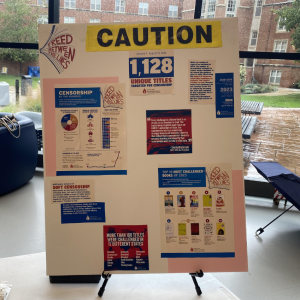Ohio congressional map struck down, commission to take action
Ohio’s current congressional map, considered to be one of the most gerrymandered in the country. The map for the next decade is currently under immense debate involving the General Assembly, he Ohio Supreme COut, and the independent Redistricting Committee.
Feb 23, 2022
Ohio lost a congressional seat due to the 2020 census, which makes it a vital year for redistricting. On Jan. 13, the Ohio Supreme Court ruled that a map passed by the General Assembly was unconstitutional in a 4-3 vote. In his opinion, Justice Michael Donnelly, a graduate of JCU’s class of ‘88, stated, “In this case, the partisan gerrymandering used to generate the 2021 congressional-district plan, through undue party favoritism and/or undue governmental-unit splits, extends from one end of the state to the other.” Ultimately, the court found that the new districts were not compliant with the Ohio constitution and its anti-gerrymandering sections. Section 6, “prohibits the state congressional (and legislative) map from unduly favoring one political party over another.”
In early February, The Ohio Supreme Court “…found that General Assembly maps adopted by the commission do not meet voter-approved provisions of the state constitution to reduce partisan political gerrymandering.” This marked the second time that the court has deemed the maps unconstitutional. The commission was given until Feb. 18 to issue and file the new map, which will still be reviewed by the courts before approval.
However, the commission did not issue the new map as of Feb. 18, which has caused tension between the courts and lawmakers. The court has given until noon on Wednesday, Feb. 23 [for the commission] to tell the court why it defied its order when it did not submit new legislative maps.” This could result in a fine or possible jail time for the legislatures. The constitutional representation of Republicans is 54%, yet the maps are giving 58% representation. Issues are now arising over the upcoming elections, both state and federal. Ballots need to be printed, campaigns need to be informed, and voters should be given ample time to review candidates.
Colin Swearingen, professor of Political Science at JCU, described the whole situation as “a mess!” Swearingen said, “there is no map-making role for the courts…so it’s hard for them to enforce. They are at the mercy of the commission.” This makes the whole situation difficult because the Ohio Supreme Court has no ability to properly enforce Section 6, besides ruling the maps as unconstitutional. Swearingen also said, “if you do not have a map that allows people to get on the ballot and get ballots out…that means you have to push the primary back.” This creates an issue for campaigns, who have to reallocate resources and change their timeline to fit this new primary date. The commission has to report by Feb. 23 to the Ohio Supreme Court, which means no remedy has been found.
Colin Moorhead II is a junior from Wadsworth, Ohio and is a World News staff writer for The Carroll News. He can be reached through email at [email protected] or on Instagram @colinmoorhead2.












